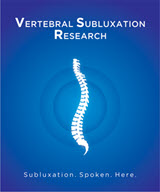New Research Sheds Light on Brain Function and Developmental Delay

CLICK HERE to review the research
“Research is revealing that there is a relationship between abnormalities in the spine, the nervous system and brain” stated Dr. Matthew McCoy, a chiropractor, public health researcher and editor of the journal that published the study. “Basic science research shows that the proper development and function of the brain relies on proper structure and movement of the spine from an early age.”
Research has shown not only that the developing brain relies on normal structural integrity and joint movement, but that complex neurochemical communication and pathways involved in helping humans to develop normally are tied into spinal biomechanics and their related neurological pathways.
“We are now seeing more and more basic science and clinical research showing the relationship between abnormal spinal function and the diagnosis of all types of developmental delays” McCoy added. In older children the situation becomes worse due to a huge increase in sedentary behavior in children.
According to McCoy, “Researchers believe that the increase in the diagnosis of learning disorders, ADHD, pervasive developmental disorder, Tourette’s Syndrome, obsessive compulsive disorder and other neurodevelopmental disorders, have their root in a “perfect storm” of abnormal spinal development coupled with cultural changes.
The child reported on in the study was a 7-year-old girl with delayed development and difficulty with coordination since birth. She ate with her hands and avoided the use of utensils. She had emotional outbursts and low self-esteem of two years duration. The mother reported that emotional outbursts were drawn out, sometimes lasting from hours to days.
The chiropractor examined the child and found structural shifts in her low back and neck. These structural shifts can lead to obstruction of the nerves and it is this obstruction, called vertebral subluxations, that chiropractors correct. An EEG was also performed that showed a decrease in alpha brain waves secondary to the structural shifts and nerve obstruction.
The child had chiropractic adjustments twice weekly for 8 weeks and after the first adjustment, the mother reported that the child spontaneously started using silverware, which she previously avoided due to difficulty with coordination. The mother reports that after chiropractic her child is better able to regulate her emotions, her coordination is improved, and she now is able to play with things like a soccer ball. A follow-up EEG showed an improvement in alpha brain waves.
The authors of the study call for more research on the role of chiropractic care in these types of developmental challenges.
Contact Information:
Matthew McCoy DC, MPH
Journal of Pediatric, Maternal & Family Health – Chiropractic
http://www.chiropracticpediatricresearch.net

Blogs
- The Chiropractic Cartel: A Look Back at Bias in Accreditation and its Imact on Today's Profession
- Inside Montana's Chiropractic Monopoly: ACA & MCA's Brazen Board Takeover
- Concerns Grow About Control of the NY State Chiropractic Board by the ACA - Use of X-ray in NY Under Threat
- Reproductive Health Information and Chiropractic Care: Navigating New Privacy Regulations
- Navigating Substance Use Disorder (SUD) Consent: What Chiropractors Need to Know













